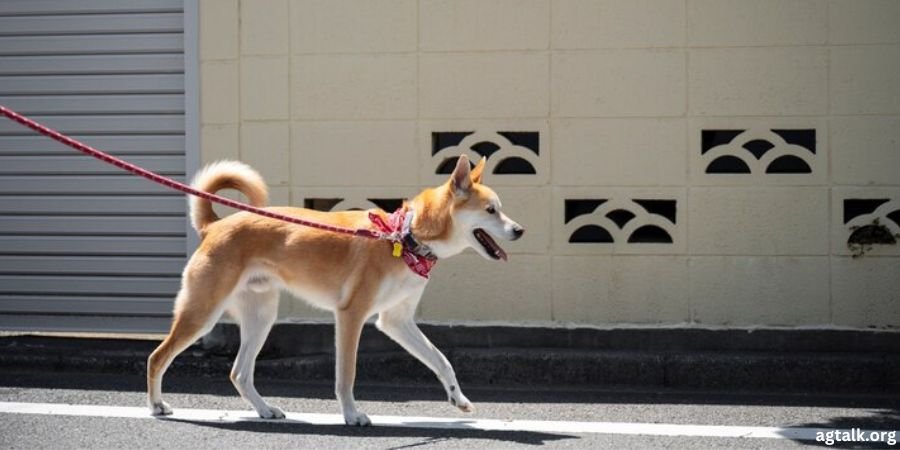Mexican Street Dogs: Understanding Their Life Challenges and Resilience
Mexican street dog often referred to as “perros callejeros,” are a significant part of the urban landscape in Mexico. These resilient canines navigate the bustling streets, forming their own communities and surviving through sheer tenacity. Understanding the lives of these street dogs not only fosters empathy but also highlights the importance of animal welfare efforts in the region.
The History of Mexican Street Dog
The presence of street dogs in Mexico dates back centuries, with their ancestors likely being domesticated dogs that either escaped or were abandoned. Over time, these dogs adapted to their urban environments, developing unique survival skills. The genetic pool of these street dogs is diverse, often resulting in robust health and adaptability.
Cultural Significance in Mexico
Street dogs have become woven into the cultural fabric of Mexico. They are often seen as symbols of resilience and survival. Despite facing numerous challenges, these dogs continue to thrive, showcasing their tenacity and spirit.
Common Breeds and Mixed Breeds
Mexican street dogs are often a mix of breeds, commonly including Chihuahuas, Mexican Hairless Dogs, and terrier mixes. These mixed-breed dogs have diverse genetic backgrounds, which usually make them robust and adaptable. This diversity helps them survive the tough conditions of street life with a wide range of physical and behavioral traits.
Characteristics of Mixed Breeds
Mixed-breed street dogs often exhibit a blend of physical and behavioral traits from multiple breeds. This genetic diversity can lead to greater adaptability and health, making them uniquely suited to the harsh realities of street life.
Dogs Life on The Streets
Street dogs face a myriad of challenges daily, including finding food, avoiding traffic, and dealing with human and animal confrontations. They often scavenge for food in trash bins and rely on their acute senses to detect danger and opportunities.
Social Structures and Pack Behavior
Many street dogs form packs, creating social structures similar to those of their wild ancestors. These packs provide safety, enhance hunting efficiency, and offer companionship, which is crucial for their survival.
Health and Well-being
Common Health Issues: Street dogs are susceptible to various health problems, including malnutrition, parasites, and injuries from accidents or fights. The lack of regular veterinary care exacerbates these issues.
Access to Food and Water: Access to food and water is a constant struggle for street dogs. They often rely on the generosity of locals or animal welfare groups that provide food and clean water.
Human Interaction
Street dogs experience a range of interactions with humans. Some people feed and care for them, while others may view them as nuisances and treat them harshly. Positive interactions can significantly improve a dog’s quality of life.
Role of Community Support
Communities play a vital role in the lives of street dogs. Local residents who provide food, water, and shelter help improve their well-being. Additionally, community-driven initiatives can lead to more organized efforts to care for these animals.
Animal Welfare Organizations
Major Organizations Working in Mexico
Several animal welfare organizations operate in Mexico, including the Humane Society International and local groups like Fundación Antonio Haghenbeck y de la Lama. These organizations work tirelessly to rescue, rehabilitate, and rehome street dogs.
Impact of Their Efforts on Street Dogs
The efforts of these organizations have led to significant improvements in the lives of many street dogs. They provide medical care, spay and neuter services, and find loving homes for rescued dogs.
Adoption and Rescue Efforts
Success Stories and Challenges: There are countless success stories of street dogs being rescued and adopted into loving homes. However, the process is fraught with challenges, including limited resources and the sheer number of dogs in need.
How to Adopt a Mexican Street Dog: Adopting a Mexican street dog can be a rewarding experience. Prospective adopters can contact local shelters or international rescue organizations to begin the process. It’s essential to be patient and prepared for the unique needs of a former street dog.
Government Policies and Animal Rights
Existing Laws and Regulations
Mexico has made strides in animal welfare, with laws in place to protect animals from cruelty and neglect. However, enforcement remains inconsistent, and many street dogs still suffer from lack of protection.
Areas Needing Improvement
Greater enforcement of existing laws, increased funding for animal welfare programs, and public education on responsible pet ownership are crucial areas needing improvement.
Cultural Perceptions
How Mexican Street Dogs are Viewed Locally
Mexican street dog are often seen with a mix of empathy and indifference. While many people show kindness towards them, others may view them as part of the urban landscape and ignore their plight.
Media Portrayal and Its Effects
Media portrayal of street dogs can significantly influence public perception. Positive stories can inspire compassion and support, while negative portrayals can perpetuate stereotypes and neglect.
Training and Rehabilitation
Methods Used to Train Street Dogs: Rehabilitating street dogs involves patience and consistency. Positive reinforcement techniques are commonly used to build trust and teach basic commands.
Rehabilitation Success Rates: The success rate of rehabilitating street dogs varies. Some dogs adapt quickly to domestic life, while others may require extended periods of adjustment and specialized care.
Success Stories
Inspiring Tales of Rescued Dogs
There are numerous heartwarming stories of street dogs overcoming adversity. From becoming therapy dogs to starring in films, these dogs prove that with love and care, they can achieve incredible things.
How They’ve Thrived in New Homes
Rescued street dogs often thrive in their new homes, forming strong bonds with their adoptive families and enjoying the comforts of domestic life.
Global Perspective
Street Dogs in Other Countries: Street dogs are not unique to Mexico; they are a global phenomenon. Countries like India, Thailand, and Greece also face similar challenges with their street dog populations.
Comparisons and Contrasts with Mexico: Comparing street dog situations across countries can provide valuable insights. For instance, some countries have more robust animal welfare programs, while others face similar struggles in terms of resources and public attitudes.
FAQs about Mexican Street Dog
1. What are the most common breeds of Mexican street dog?
Common breeds include Chihuahuas, Mexican Hairless Dogs, and various terrier mixes. Many street dogs are mixed breeds with diverse genetic backgrounds.
2. How can I adopt a Mexican street dog?
Contact local shelters or international rescue organizations that work in Mexico. They can guide you through the adoption process and help you find a suitable dog.
3. What organizations help Mexican street dogs?
Organizations like Humane Society International and Fundación Antonio Haghenbeck y de la Lama are actively involved in rescuing and rehabilitating street dogs in Mexico.
4. Are Mexican street dogs healthy?
While street dogs can face health issues due to their living conditions, many are surprisingly resilient. With proper care and veterinary attention, they can lead healthy lives.
5. What can I do to help Mexican street dogs?
You can volunteer your time, donate to animal welfare organizations, support local initiatives, and spread awareness about the plight of street dogs to help improve their lives.
Conclusion
Mexican street dog embody resilience and survival in the face of adversity. By understanding their lives and challenges, we can foster empathy and take meaningful actions to support them. Whether through adoption, volunteering, or advocating for better policies, each of us can play a role in improving the lives of these remarkable animals.
Read More Interesting Topic:
- Understanding Cảbon: The Essential Element of Life
- Ỏganic Living: The Complete Guide to Health and Sustainability
- Understanding Mıllıeyt: A Comprehensive Guide
- Llaquichan: Unraveling the Mysteries of Andean Heritage
- Nnevelpappermann Leaks: A Deep Dive into the Scandal
Share this content:














Post Comment